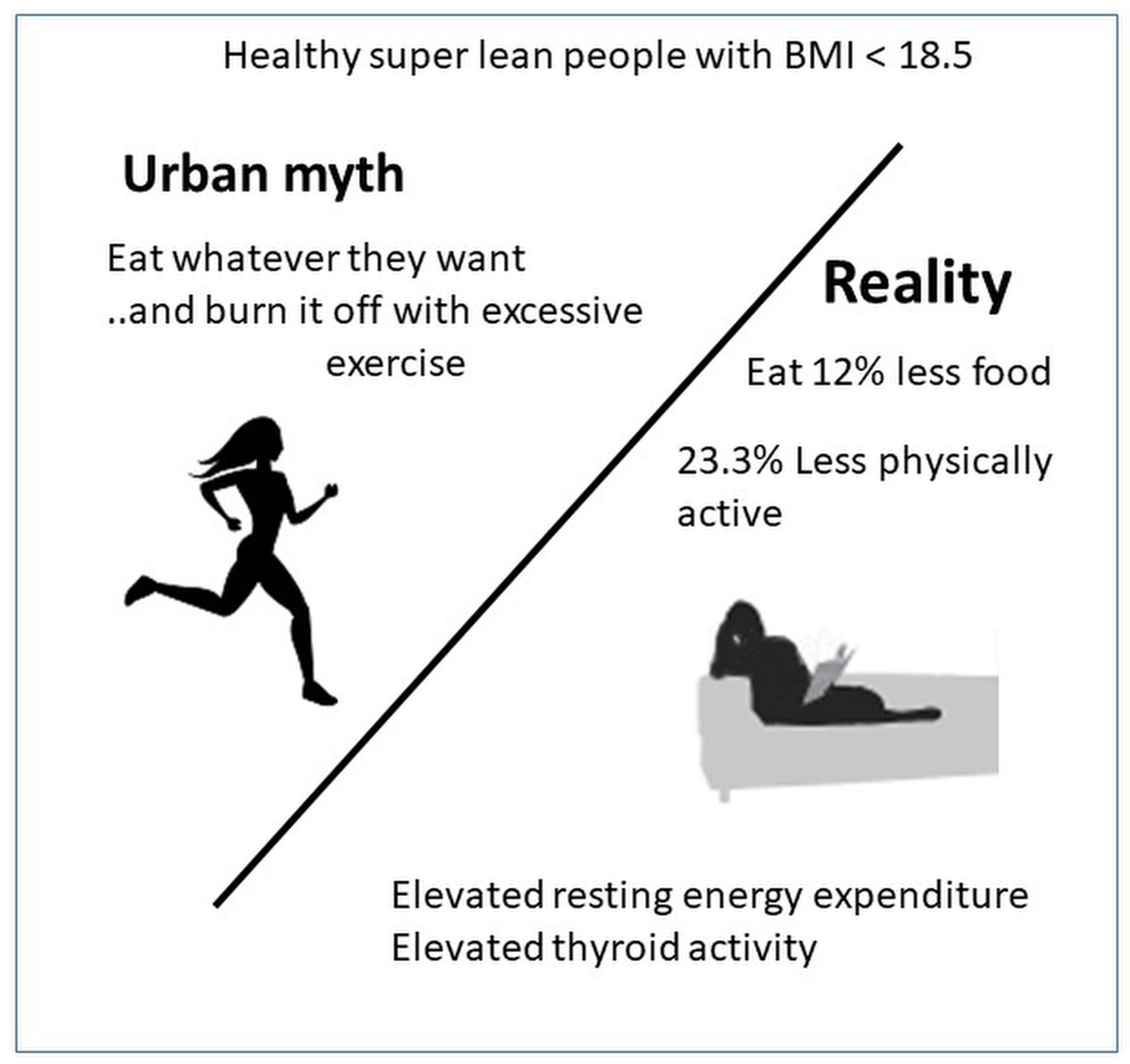
Study in China finds healthy thin people eat and exercise less rather than burning off excess calories
- Research team says its data overturns the common perception that underweight people burn off extra calories with physical activity
- The scientists monitored 323 Beijing residents for two weeks to learn more about why some people do not gain weight
Researchers say they have debunked the urban myth that healthy underweight people “eat whatever they want and burn it off with exercise”.
A study of healthy Chinese adults considered underweight, according to the widely used Body Mass Index (BMI), found they not only do not eat as much food as people with a “normal” BMI, they are also less physically active.
“Our data suggests they eat about 12 per cent less than adults with a normal BMI,” the team of scientists wrote in an article published by the peer-reviewed journal Cell Metabolism on Thursday.
“We can reject the hypothesis that healthy underweight adults derive their leanness from high levels of physical activity.”
The team, drawn from institutes including the Chinese Academy of Sciences, Beijing Technology and Business University and the University of Aberdeen in Britain, said the study’s “healthy underweight” participants were 23 per cent less active than the group with a normal BMI.

They also had higher-than-expected resting metabolic rates with an elevated resting energy expenditure and thyroid activity, the scientists said.
The researchers said very little is known about the lifestyle and physiology, genetics, and how metabolism correlates with leanness among people classified by the BMI as healthy, yet lean.
The team recruited 173 people in Beijing aged between 20 and 40 with a normal BMI and 150 others defined by the index as “healthy underweight” for the study in 2017 and 2018.
The underweight group had a BMI below 18.5 with no eating disorders, HIV infection or weight loss related to illness in the previous six months. The group was dominated by women, at 83 per cent compared to 47 per cent in the group with a normal BMI.
The researchers said it was unclear whether women are over-represented in the lean and healthy population, or if they are more likely to volunteer.
The participants wore a motion detector on their waists to measure physical activity, while their daily energy expenditure was measured by an isotope-based technique using doubly-labelled water which predicts food intake.

Doubly labelled water looks and tastes like ordinary water but some of the hydrogen and oxygen has been replaced with isotopes of these elements which can be traced in urine samples.
The technique allows researchers to measure the body’s carbon dioxide production to assess energy expenditure based on the difference between the washout rates of hydrogen and oxygen.
In this study, the doubly-labelled water and urine samples were prepared and analysed by the University of Aberdeen.
The study’s lead author Hu Sumei, a lecturer at the Beijing Technology and Business University’s school of food and health, said the BMI – while a handy tool – should be seen as just one health indicator, alongside other factors such as body composition and metabolic rate.
“The takeaway is that eating less in quantity and having less fat body mass could be more important than being active in weight management and maintaining health for healthy underweight people,” she said.
Hu said the team will expand its research with a similar study in Shenzhen, southern China. They also want to look at the genetic differences between healthy underweight people and their counterparts with a normal BMI.

